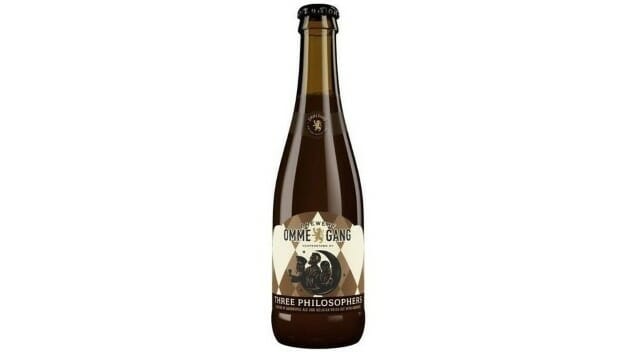My Month of Flagships: Brewery Ommegang Three Philosophers
Photos via Brewery Ommegang
This essay is part of a series this month, coinciding with the concept of Flagship February, wherein we intend to revisit the flagship beers of regional craft breweries, reflect on their influence within the beer scene, and assess how those beers fit into the modern beer world. Click here to see all the other entries in the series.
To some breweries, the term “flagship” is as simple as denoting the company’s biggest mover or most profitable product. To others, though, it’s a bit more ephemeral idea. Perhaps it’s the beer they’re best known for making in the beer geek circles, regardless of whether it’s actually the one they sell the most. Perhaps it’s simply the beer they’re most proud to make, or the one that best reflects the brewmaster’s ethos as an artist. That would certainly be fitting with the origin of the phrase “flagship” to begin with—it was the proudest, most valuable component of the fleet. And to Brewery Ommegang, that beer is Three Philosophers.
There are other potential contenders for the idea of “flagship” at Ommegang, of course. The first one that came to mind for me personally was the company’s enduring saison Hennepin, a classic Franco-Belgian style that is regarded as perhaps the first American-made example of saison. And then there’s also Ommegang Abbey Ale, which has been brewed ever since the brewery opened its doors in 1997—a time when brewing classic Belgian ales in America was a very dicey proposition indeed. But Ommegang actually sees Three Philosophers as its official flagship, because it’s that member of the year-round roster that they feel best sums up the spirit of the brewery, which tips its cap to Belgian tradition while also being open to innovation.
Three Philosophers illustrates that philosophy perfectly, being a blended beer that takes two beloved, historical beer styles—Belgian quad and kriek—and combines them to form something that is more than the sum of its parts. The result is a heady, fruity, boozy, complex enigma, which at 9.7% ABV is far and away the strongest beer to be represented in this Flagship February series. It’s also the only one to be packaged in a large format bottle. Truly, Three Philosophers is unlike the rest of the beers we’ve been talking about here, and I’m glad for the chance at a little variation.
I also love the idea itself that went into Three Philosophers, because it takes two different styles and then finds a common ground between them that emboldens one and softens the other. The quadrupel, arguably, is made gentler and less booze-forward by the addition of bright, fruity cherry ale (kriek lambic), while the kriek is given more structure and backbone with the round, malty, spicy exuberance of the quad. What you end up with is a golden compromise that is not just an illustration of the skill of Ommegang’s brewers, but the skill of the blender’s art, who must find the perfect balancing point where the two best work in harmony together. And it’s safe to say that they accomplish exactly that.
It’s been quite a while since I’ve re-tasted this particular beer, so I’m looking forward to seeing how Three Philosophers is drinking in 2020.
-

-

-

-

-

-

-

-

-

-

-

-

-

-

-

-

-

-

-

-

-

-

-

-

-

-

-

-

-

-

-

-

-

-

-

-

-

-

-

-








































